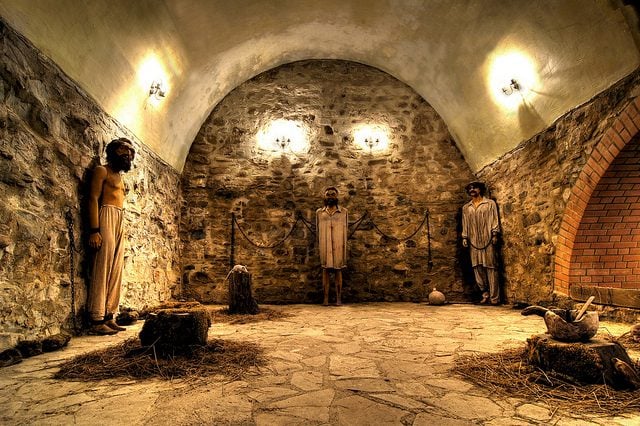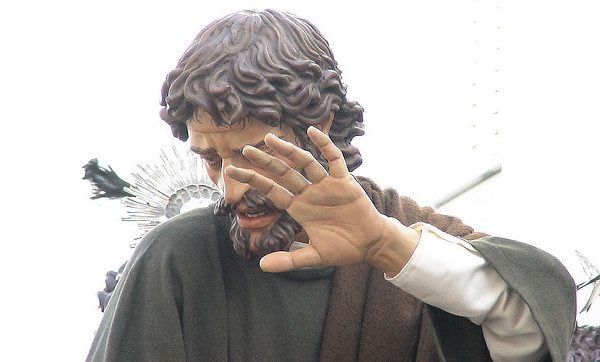My first run-in with trinitarian theology happened sometime around the fifth grade when my Sunday School teacher tried to explain the concept in a way that prepubescent boys would understand.
He failed miserably. He used a water metaphor. If three individual drops of water are put into a bowl, he said, they become one, but there are still three drops of water in the bowl. Most of us in the classroom were confused. For a long time, I chalked up his failure to communicate the Trinity to his shortcomings as a teacher and theologian for preteens. Now, years later, I realize the problem wasn’t him. It was the entire concept.
To many outside Christianity, the Trinity seems a lot like polytheism or at least tritheism, some kind of divine triumvirate as it were. If we can manage to bracket momentarily all the theological loopholes and dodges we have been taught, we have to admit that these critics have a point. To be honest, the Trinity is one of those extrabiblical or inferred concepts, like penal substitutionary atonement, that makes less sense the more it is analyzed. To the uninitiated, it can seem like a fanciful myth Christians have created rather than sound theology.
Over the years, I’ve encountered any number of explanations for the Trinity. That there aren’t three divine beings, but just three modes of one being — the same thing in different form or manifestation. Or, conversely, that there is just one mode of three beings — different beings unified in thought and action. St. Patrick, legend tells us, used a shamrock to illustrate it, and the early church fathers explained it as a divine dance, perichoresis.
I’ve been over the different traditional explanations time and again. But just as when I was a fifth-grader, each explanation I encounter today still seems to lack something, and it can even be difficult to square trinitarian concepts with Jesus’ own profoundly human interactions with God in the gospels. The point of the Trinity, I’ve been told, is that the basis of God is relationship, perfect harmonious relationship, to which the church should aspire.
I think this is a compelling interpretation, but how difficult is it, exactly, for Godhead to be in relationship with each other when each is always agreeing with itself? That’s not how most of us experience relationships — free of conflict, disagreements and compromise. I can’t help but wonder if this lens of understanding the Trinity with its eternal divine agreement of will and purpose is rather disempowering to those who slog it out in marriages, friendships and parishes with the tenacity, resilience, debate, disagreement and compromise that real relationships require.
So, no, in such cases, I don’t believe in the Trinity.
But, then again, I do.
To me, the Trinity is a metaphor by which finite beings can understand a piece of the infinite mystery called God. It is the metaphor that directs us toward each other rather than away, the metaphor that keeps us from tarrying too long on the mountaintop where it is safe. And it is a beautiful, profound metaphor that has more power than whether the Father, Son and Holy Spirit are actually dancing around heaven and earth in perfect harmony, whether they are sprouting leaves from the same shamrock stem, whether they are droplets of water that exist together and separately.
And, truly, this is all theology really is — a metaphor that points to something beyond it, something it fails to grasp completely, but that at least tries to grapple with.
This is the problem with theologians who try to use metaphors to explain what is already a metaphor, or when theologians attempt to parse the exact nature of the metaphor. A metaphor of a metaphor only muddies things more. In essence, the Trinity is a metaphor about relationships. It is a metaphor that directs us toward each other rather than away, a metaphor that keeps us from retreating into solitude whenever relationships grow difficult.
Problems occur, though, when we begin to use the metaphor to exact a precise definition or formula for what and who God is. That’s not a what metaphor does. A metaphor isn’t meant to be believed in. Rather, it is an arrow pointing toward something ineffable behind it.
The metaphor of the Trinity isn’t meant to explicate God, but to guide us toward what it means to be more fully human. The trinitarian metaphor doesn’t tell us about God. It tells us about ourselves.
So, when I say the bit about the Father, Son and Holy Spirit in the Nicene Creed, I suppose there is a part of me that doesn’t believe in it literally as some might expect. Yet, I confess the Trinity with a clear conscience, because I believe in that to which this metaphor points, because I believe in what the metaphor says more than what it is.
Essentially, the Trinity says what our sacred text says at its opening creation myth: that it is not good for humans — or God for that matter — to be alone; that meaning is created in community and through relationships; that we do better as creatures when we join hands rather than raise fists.
May they and I be confident that the Trinity isn’t real at all, but that it is more than real.












